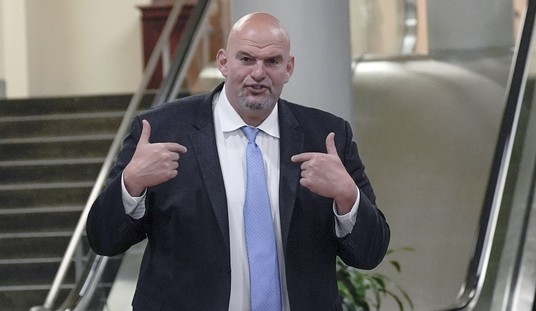The Supreme Court’s decision upholding the Second Amendment, and striking down the District of Columbia’s handgun ban and the ban on the use of any firearm for self-defense in the home, is solidly reasoned. Although the case leaves ample room for moderate gun control laws, the case casts doubt on the continuing validity of a variety of other gun prohibitions.
Justice Scalia, who has long shown an interest in firearms law and policy, wrote the majority opinion, joined by Chief Justice Roberts and Justices Thomas, Kennedy, and Alito. A dissent written by Justice Stevens, and joined by Justices Souter, Ginsburg, and Breyer argued that the Second Amendment protects only an individual right of vanishingly small proportions — the right of a militiaman not to be disarmed by the federal government when he is on active militia duty. Justice Breyer wrote a separate dissent, joined by the other three dissenters, arguing that even if the Second Amendment protects all law-abiding citizens, the handgun ban should be upheld because it is reasonable.
Justice Scalia’s majority opinion was impressively well-informed by the scholarly debate over the Second Amendment that has been going for the past several decades. The textual analysis is meticulous, supplemented by careful attention to the many early American and English sources which elucidate the meaning of the various words.
Justice Stevens’ effort to read the Second Amendment as militia-only requires too many implausible inferences. For example, it is true that the phrases “keep arms” and “bear arms” were often used to refer to arms possession and use in military bodies such as the militia. But as Justice Scalia points out, there are also many examples of both phrases being used to refer to owning and carrying guns for other purposes, such as self-defense and hunting.
After analyzing the text of the Second Amendment, the majority opinion then detailed the interpretation of the Second Amendment in the first half of the 19th century, showing that every legal scholar (except for one minor exception), along with state and federal courts, recognized the Second Amendment as an individual right to have guns for various purposes, including self-defense.
As Scalia explained, after the Civil War, Congress passed the Freedmen’s Bureau Act of 1866, the Civil Rights Act of 1871, and then the Fourteenth Amendment — all with the explicit purpose of stopping southern governments from interfering with the Second Amendment rights of former slaves to own firearms to protect their homes and families. All the scholarly commentators of the late 19th century — including the legal giants Thomas Cooley and Oliver Wendell Holmes, Jr. — recognized the Second Amendment as an individual right.
Previous Supreme Court precedents have not — contrary to the vehement insistence of gun prohibition advocates — adopted a contrary interpretation, the majority said. United States v. Cruikshank (1876) described the right to arms as a preexisting natural right which was protected — but not created — by the Second Amendment.
The 1939 case of United States v. Miller, which held that a tax and registration requirement for sawed-off shotguns was not facially unconstitutional, is heavily relied on by the dissent. But the majority points out that Miller‘s analysis of the history of the Second Amendment was cursory; Miller did not even submit a brief, and, as explicated in a law review article cited by Scalia, the Miller case appears to have been a collusive case involving a corrupted defense attorney doing the bidding of the prosecutor. Most importantly, the Miler opinion turned on whether the particular type of gun was protected by the Second Amendment, and did not declare that only militiamen had a right to arms.
In response to Justice Stevens’ complaint that “hundreds of judges” have relied on the anti-individual rights interpretation of Miller, Scalia shot back: “their erroneous reliance upon an uncontested and virtually unreasoned case cannot nullify the reliance of millions of Americans (as our historical analysis has shown) upon the true meaning of the right to keep and bear arms.”
Then, adopting the interpretation urged by lead counsel Alan Gura is his brilliant brief for Heller, the majority opinion states: “We therefore read Miller to say only that the Second Amendment does not protect those weapons not typically possessed by law-abiding citizens for lawful purposes, such as short-barreled shotguns.” This language — along with language a few pages later implying that an automatic M-16 rifle can be banned — indicates that the federal ban on civilian possession of machine guns manufactured after 1986 is still constitutional; but a renewal of the expired federal ban on so-called “assault weapons,” which outlawed about 200 cosmetically incorrect sport-utility guns either by name or by generic description, might be unconstitutional.
As for the constitutionality of other gun controls: “nothing in our opinion should be taken to cast doubt on longstanding prohibitions on the possession of firearms by felons and the mentally ill, or laws forbidding the carrying of firearms in sensitive places such as schools and government buildings, or laws imposing conditions and qualifications on the commercial sale of arms.” The word “commercial” in the last sentence could suggest that there might be constitutional problems on some laws which applied to non-commercial arms transfers. (However, there are few federal laws on non-commercial transfers, other than criminal penalties for transferring guns to prohibited persons.)
The majority opinion also affirmed the validity of bans on gun carrying in “sensitive” locations such as schools and government buildings. The language may imply that a total ban on gun carrying in ordinary public places is unconstitutional. But Heller does not attempt to answer the question of whether the Fourteenth Amendment makes the Second Amendment enforceable against state and local governments, and most carrying restrictions in public places are created by state and local governments. For now, Heller limits only the federal government — and entities such as the D.C. City Council, whose powers are granted by the federal government.
D.C. and its amici had argued that a handgun ban was alright because people could still have long guns for self-defense in the home. But the majority observed: “There are many reasons that a citizen may prefer a handgun for home defense: It is easier to store in a location that is readily accessible in an emergency; it cannot easily be redirected or wrestled away by an attacker; it is easier to use for those without the upper body strength to lift and aim a long gun; it can be pointed at a burglar with one hand while the other hand dials the police. Whatever the reason, handguns are the most popular weapon chosen by Americans for self-defense in the home, and a complete prohibition of their use is invalid.”
The D.C. law also required that rifles and shotguns as well as grandfathered pre-1976 handguns be locked or disassembled at all times in the home. D.C. and its amici conceded that a ban on using guns for self-defense in the home would be unconstitutional, but argued that the locking law contained an implicit exception for self-defense. Justice Scalia pointed out that when the D.C. law had been challenged in an earlier case (McIntosh v. Washington, 1978), the D.C. Court of Appeals (D.C.’s equivalent to a state supreme court) had pointed to the requirement that all guns in the home be inoperable as one of the features of the law.
While the majority opinion argued at length with Justice Stevens’ dissent on the text and history of the Second Amendment, the engagement with the Breyer dissent was shorter. Breyer wanted courts to perform an ad hoc balancing test on the merits of gun bans or gun controls, and he thought that there was enough social science in support of the handgun ban — although he conceded that there was a good deal of social science on other side, too — that the handgun ban should be upheld.
Justice Scalia accurately noted that the Breyer approach would negate the very decision to enact the Second Amendment: “We know of no other enumerated constitutional right whose core protection has been subjected to a freestanding ‘interest-balancing’ approach. The very enumeration of the right takes out of the hands of government — even the Third Branch of Government — the power to decide on a case-by-case basis whether the right is really worth insisting upon. A constitutional guarantee subject to future judges’ assessments of its usefulness is no constitutional guarantee at all. Constitutional rights are enshrined with the scope they were understood to have when the people adopted them, whether or not future legislatures or (yes) even future judges think that scope too broad.”
Today the law-abiding citizens of D.C. regained their right to defend themselves in their home, and to use the most suitable defensive arm for that purpose. But the bigger winner today was the Constitution itself, vindicated by a majority decision which was faithful to the Constitution’s text, and to the spirit of liberty which animated the American people who drafted and ratified the Second Amendment.









Join the conversation as a VIP Member